当前位置:网站首页>完美解决keyby造成的数据倾斜导致吞吐量降低的问题
完美解决keyby造成的数据倾斜导致吞吐量降低的问题
2022-08-04 05:27:00 【第一片心意】
1. 问题现象
最近在做一个类似页面pv的累加统计,根据页面id维度来统计一段时间内收到了数据。
下面模拟的是处理数据的原始程序。
2. 原始处理
2.1.模拟kafka源
import org.apache.flink.streaming.api.functions.source.SourceFunction
import scala.util.Random
/**
* 每1毫秒发出一个二元组,第一个元素为随机获取到numbers中的一个数字,第二个元素为1,表示统计字段,本示例只进行累加,模拟接收到的数据的条数
*
* @author ziqiang.wang
* @date 2022-01-02 17:33
* */
class Tuple2Source extends SourceFunction[(String, Int)] {
private val random: Random = new Random()
private var flag: Boolean = true;
/**
* 数字数组,数据分布不均匀
*/
private val numbers: Array[Int] = Array[Int](1, 1, 1, 1, 1, 2, 2, 3, 4, 5)
override def run(ctx: SourceFunction.SourceContext[(String, Int)]): Unit = {
while (flag) {
val index: Int = random.nextInt(10)
ctx.collect((numbers(index).toString), 1)
Thread.sleep(1)
}
}
override def cancel(): Unit = {
flag = false
}
}原始需求中,接收到的是kafka数据,为字符串类型,然后通过map转换,提取出页面的id,然后转化为二元组。上面自定义的source就是模拟的原始数据转化为二元组之后的数据。注意里面的numbers,数字1出现了5次,数字2出现了2次,剩下的数字出现了1次,以此来模拟数据分布不均匀的生产数据。
2.2. 对数据进行窗口累加
object NoMiniBatchDemo extends Serializable {
def main(args: Array[String]): Unit = {
val env: StreamExecutionEnvironment = StreamExecutionEnvironment.getExecutionEnvironment
env.setParallelism(10)
val source: DataStream[(String, Int)] = env.addSource(new Tuple2Source).name("tuple2")
source
.keyBy(_._1)
.window(TumblingProcessingTimeWindows.of(Time.seconds(10)))
.reduce((x, y) => (x._1, x._2 + y._2)).name("windowAgg")
.print("结果数据:")
env.execute("NoMiniBatch")
}
}具体计算时,根据二元组第一个字段进行keyby,然后reduce,对第二个元素进行累加即可。但是由于页面很少,而且每个页面的数据量分布很不均匀,所以造成了很大的数据倾斜。
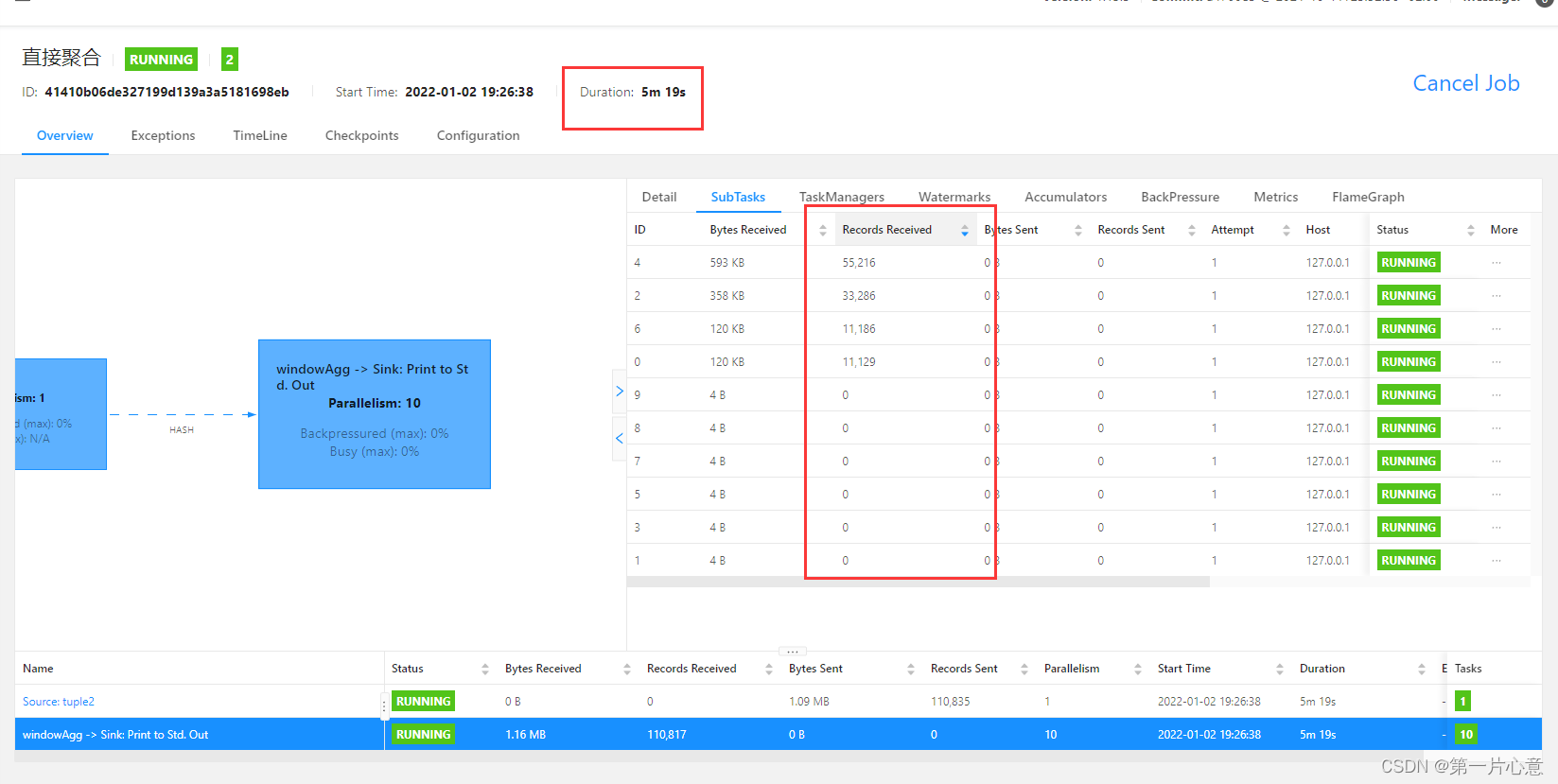
从上图可以看出,运行一段时间之后发现,数据倾斜非常严重,而且由于key数量比较少,又很多并行度一直是收不到数据的。在这种情况下,即使是增加算子的并行度,也是无法解决根本问题的。
网上有种方案是,在key后面添加一个固定的随机数,亦或是对key取hash,然后和key一起拼接起来作为key,虽然能在一定程度上改善数据倾斜的问题,但还是无法彻底决绝数据倾斜造成的低吞吐量问题。
3. 两阶段聚合解决方案
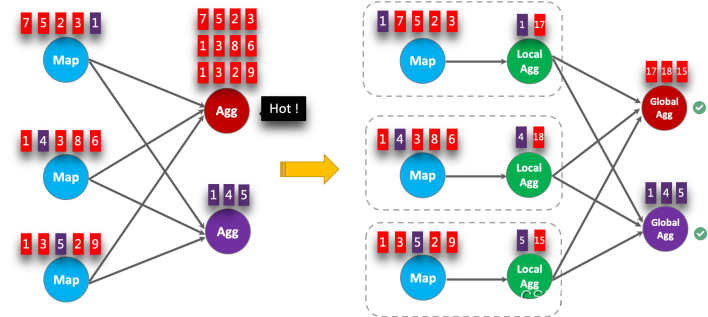
上图是flink观望中对于flink sql的一种优化,优化方案为:Local-Global Aggregation,意思就是,现在本地进行一次聚合,然后将数据发送到下游的Agg聚合算子,然后再进行全局聚合。这种方案类似于MapReduce中的combiner,先在上游对数据进行一次聚合,以减少发送到下游的数据量,从而使降低下游的数据处理量,以增加总体的吞吐量。
3.1. 本地聚合
/**
* 不断聚合接收到的数据,当算子子任务处理的数据量或者是时间达到要求,则输出所有累计结果,以减少发往下游的数据量
*
* @author ziqiang.wang
* @date 2022-01-02 17:57
* */
class LocalAggProcess extends ProcessFunction[(String, Int), (String, Int)] with CheckpointedFunction {
// 状态,保存中间结果middleResult表的所有元素
var listState: ListState[(String, Int)] = _
// 当前并行度已处理的数据量
var count: Long = 0
// 处理数据量达到该阈值,输出所有中间结果
val outThreshold: Long = 100
// 上次输出的时间
var lastOutTimeMillis: Long = System.currentTimeMillis()
// 当前时间
var currentTimeMillis: Long = System.currentTimeMillis()
// 输出时间间隔
val outDuration: Long = 1000
// 保存中间聚合结果
var middleResult: mutable.Map[String, Int] = mutable.Map[String, Int]()
override def open(parameters: Configuration): Unit = {
// 每秒更新一次当前时间,而不是每处理一条数据就更新一次当前时间,以减少获取系统时间造成的资源消耗
new Timer("更新当前时间", true).scheduleAtFixedRate(new TimerTask {
override def run(): Unit = currentTimeMillis = System.currentTimeMillis()
}, 1000, 1000)
}
override def processElement(value: (String, Int), ctx: ProcessFunction[(String, Int), (String, Int)]#Context, out: Collector[(String, Int)]): Unit = {
if (middleResult.contains(value._1)) {
middleResult.put(value._1, middleResult(value._1) + value._2)
} else {
middleResult.put(value._1, value._2)
}
count += 1
// 如果该并行度处理数据量达到输出阈值,或者是当前时间达到输出时间间隔,则输出所有中间结果
if (count % outThreshold == 0 || currentTimeMillis - lastOutTimeMillis >= outDuration) {
middleResult.foreach(entry => out.collect((entry._1, entry._2)))
lastOutTimeMillis = currentTimeMillis
middleResult.clear()
}
}
/**
* 做checkpoint快照时执行,将中间结果保存到listState状态中
*/
override def snapshotState(context: FunctionSnapshotContext): Unit = {
listState.clear()
middleResult.foreach(entry => listState.add(entry._1, entry._2))
}
/**
* 初始化和从checkpoint恢复时调用
*/
override def initializeState(context: FunctionInitializationContext): Unit = {
val descriptor: ListStateDescriptor[(String, Int)] = new ListStateDescriptor[(String, Int)]("中间结果", TypeInformation.of(new TypeHint[(String, Int)] {}))
listState = context.getOperatorStateStore.getListState(descriptor)
if (context.isRestored) {
middleResult.clear()
listState.get().forEach(entry => middleResult.put(entry._1, entry._2))
}
}
}3.2. 两阶段聚合实现
object LocalAggDemo extends Serializable {
def main(args: Array[String]): Unit = {
val env: StreamExecutionEnvironment = StreamExecutionEnvironment.getExecutionEnvironment
env.setParallelism(10)
val source: DataStream[(String, Int)] = env.addSource(new Tuple2Source).name("tuple2")
source
.process(new LocalAggProcess).name("miniBatch")
.keyBy(_._1)
.window(TumblingProcessingTimeWindows.of(Time.seconds(10)))
.reduce((x, y) => (x._1, x._2 + y._2)).name("windowAgg")
.print("结果数据:")
env.execute("NoMiniBatch")
}
}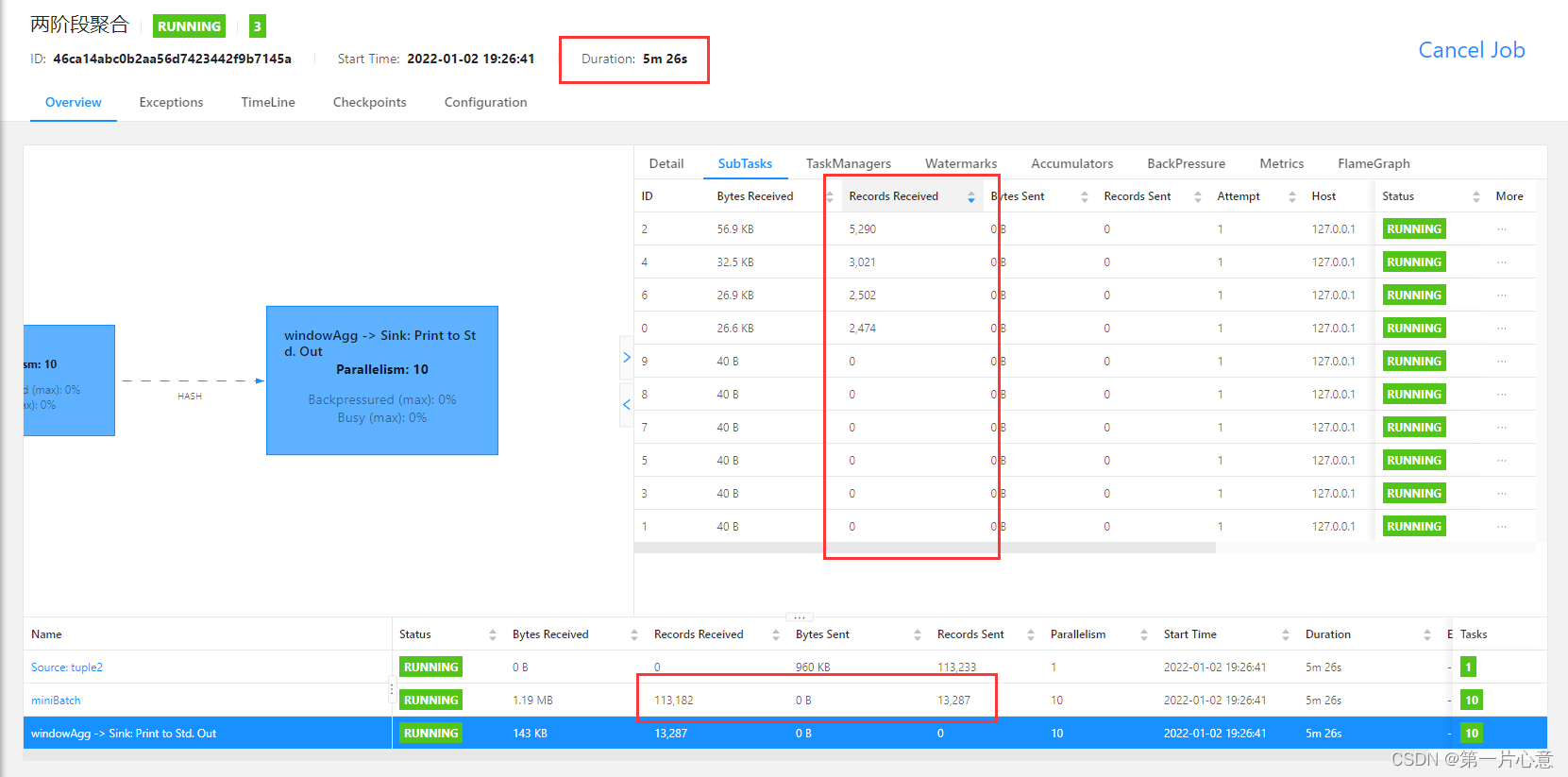
从上图可以看出,resuce算子接收到的数据明显比不使用两阶段聚合时少的多。在本地聚合算自重,我设置的是满足100条或5秒中任何一个条件时输出数据,在生产环境中,可以根据实际接收到的数据量来对这两个条件进行调整。
边栏推荐
猜你喜欢
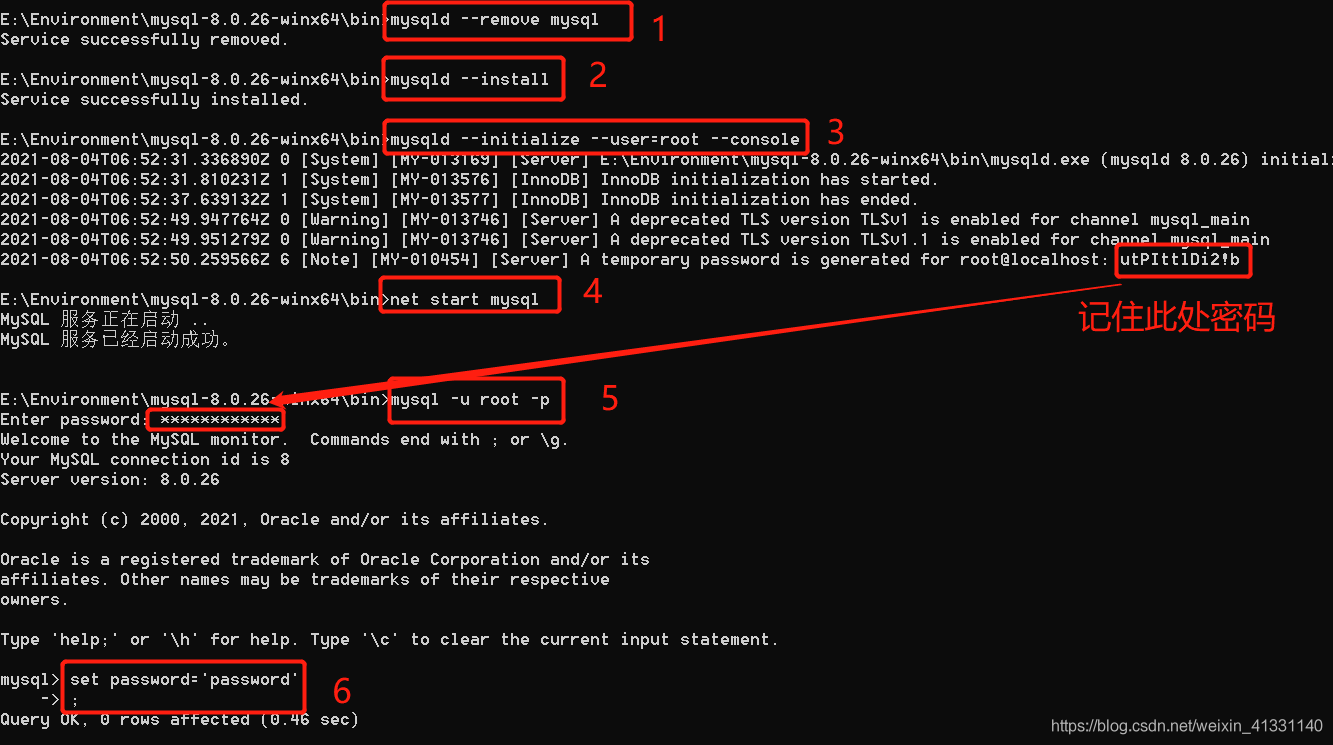
Can 't connect to MySQL server on' localhost3306 '(10061) simple solutions
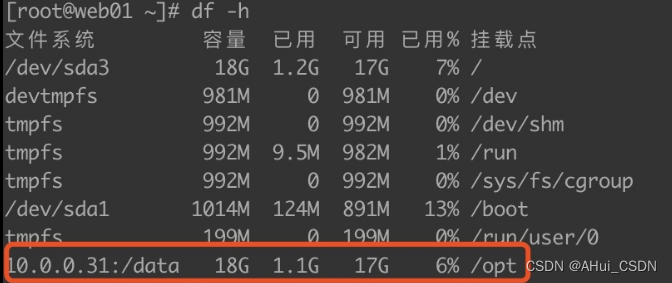
自动化运维工具Ansible(3)PlayBook
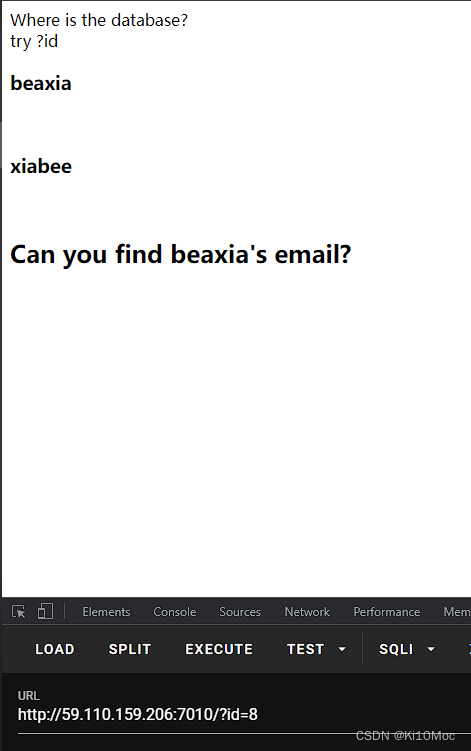
ISCC-2022

Canal mysql data synchronization
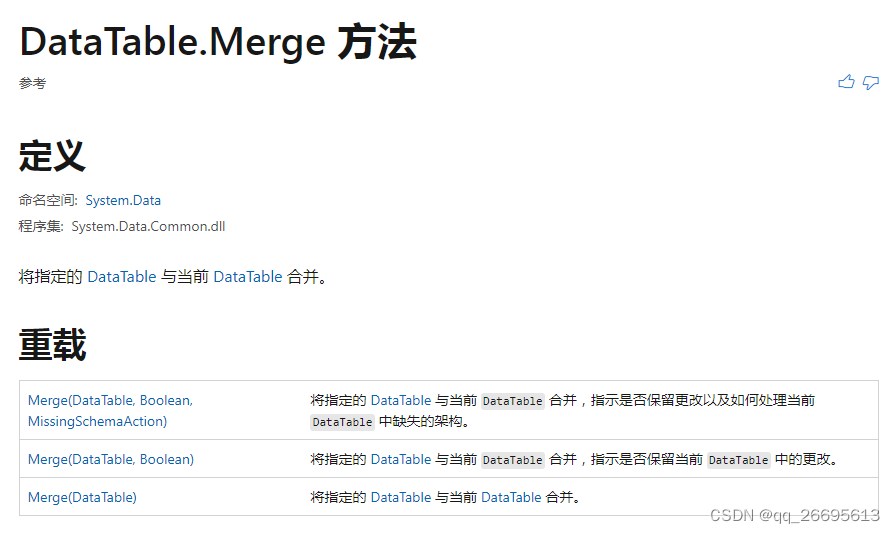
将两个DataTable合并——DataTable.Merge 方法
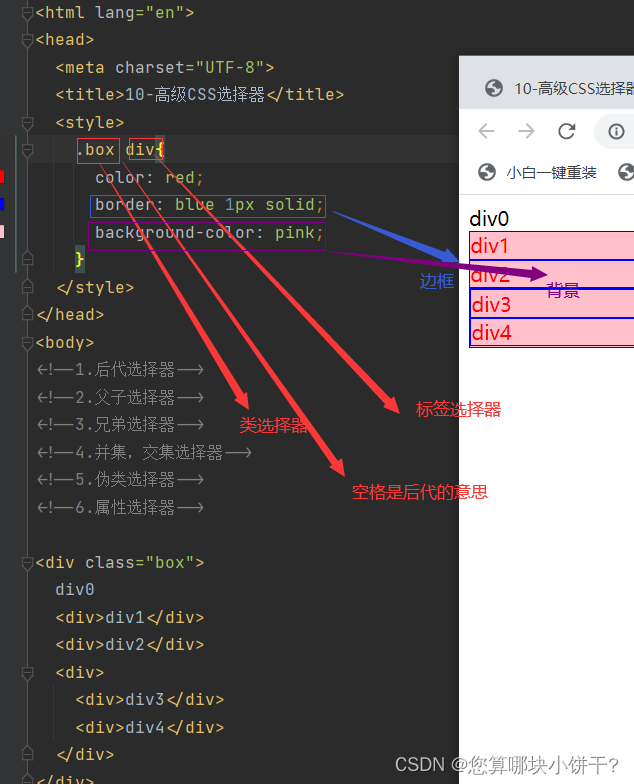
7.18 Day23 - the markup language
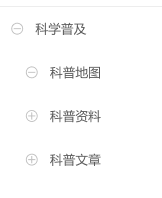
实际开发中左菜单自定义图标点击切换
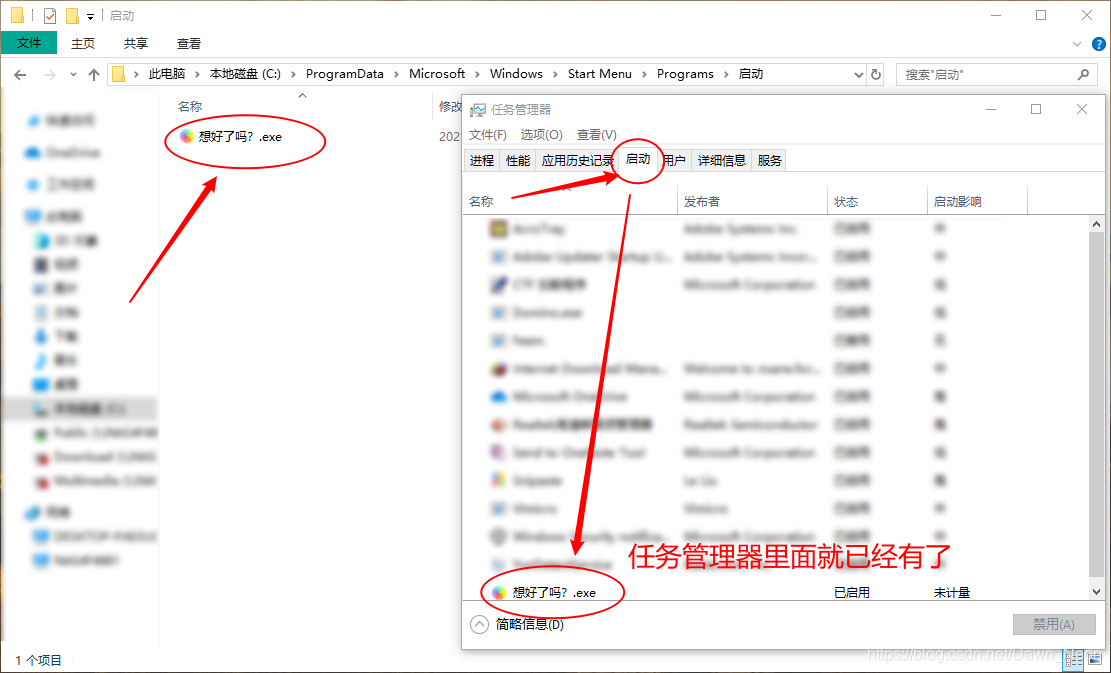
想好了吗?
![Embedded system driver primary [3] - _IO model in character device driver foundation](/img/c7/21fc0651964a6a435e8ec5743b7662.png)
Embedded system driver primary [3] - _IO model in character device driver foundation
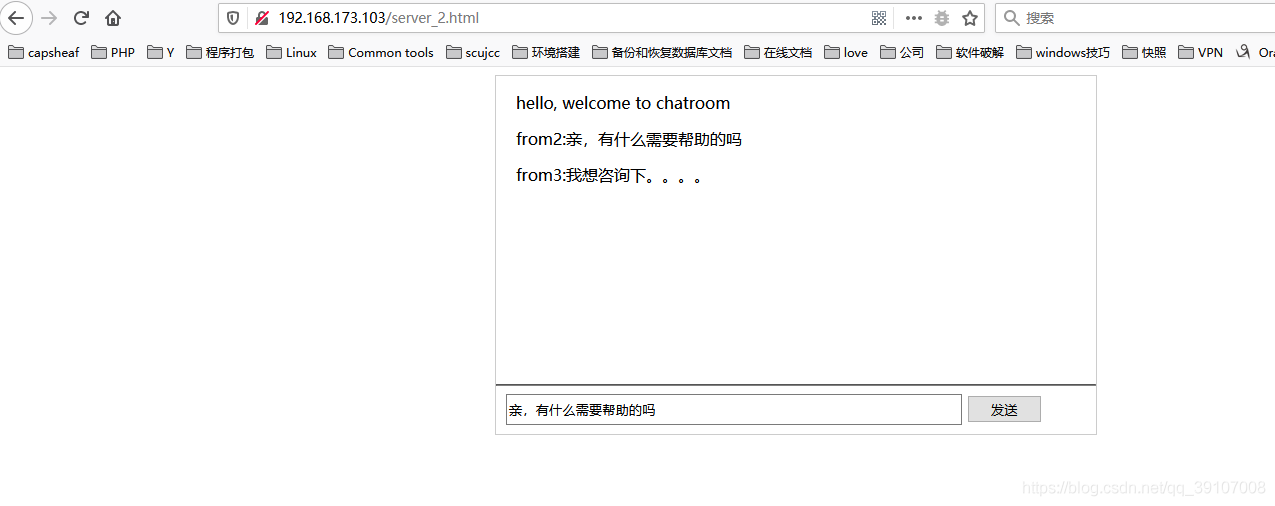
Swoole学习(二)
随机推荐
Shell(3)条件控制语句
js 基础学习笔记
Embedded system driver primary [4] - under the basis of character device driver _ concurrency control
Unity DOTS学习教程汇总
PHP实现异步执行程序
关系型数据库-MySQL:二进制日志(binlog)
MediaCodec支持的类型
webrtc中的引用计框架
【树 图 科 技 头 条】2022年6月28日 星期二 伊能静做客树图社区
关系型数据库-MySQL:多实例配置
实际开发中,客户要求密码输入框禁止粘贴~
lambda函数用法总结
纳米级完全删除MYSQL5.7以及一些吐槽
webrtc中视频采集实现分析(二) 视频帧的分发
VScode配置PHP环境
BUUCTF——MISC(一)
页面刷新没有执行watch?
编程Go:内置打印函数 print、println 和 fmt 包中 fmt.Print、fmt.Println 的区别
关于事件捕获和事件冒泡的顺序,以及如何处理事件冒泡带来的影响
NFT市场开源系统